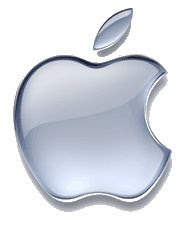 So, no GPhone — yet. Google, with quite a number of partners, today announced the already much-rumoured “Open Handset Alliance” under which a Linux-based OS, nicknamed Android has been launched (the SDK will allegedly be available in a week’s time). Here’s a video explaining the deep thoughts of the creators (be quick: YouTube has removed it already…).
So, no GPhone — yet. Google, with quite a number of partners, today announced the already much-rumoured “Open Handset Alliance” under which a Linux-based OS, nicknamed Android has been launched (the SDK will allegedly be available in a week’s time). Here’s a video explaining the deep thoughts of the creators (be quick: YouTube has removed it already…).
The whole industry had been waiting for this, and Google seems to have come up with a black-white thing: it goes back to its roots in open source but overlays it with Java, which has caused the content community a lot of headaches (every mobile phone translates it slightly differently, so one needs a gazillion ports). However, Google has teamed up with no less than 34 partners for the launch alone, including such giants as China Mobile, KDDI, Sprint Nextel, TIM, T-Mobile, Motorola (who seem to be dancing on a lot of weddings recently: UIQ and Linux Mobile are also on their plates), Samsung, HTC, Intel and eBay.
 So what does it all mean? According to the members of the alliance, it will be better, bigger, faster for everyone: open source means more applications, less bugs and less cost. According to Google CEO Eric Schmidt, it is “a fresh approach to fostering innovation in the mobile industry will help shape a new computing environment that will change the way people access and share information in the future.” Commentators note that there is apparently one caveat: you’ll have to use Google for navigation. Now: does that bother anyone? Give me Internet on my phone on broadband speed and I happily surf with whoever gives it to me, I’d say. To enact a platform, supported by a lot of sector muscle, that makes the developers’ life easier should be good for everyone indeed as it will undoubtedly bring more usage. Traditionally, carriers feared for the consistency of the user experience. Apparently, Verizon and AT&T have already voiced such concerns also here although the explanation sounds defensive at best: they fear too much advertising. Would it be safe to say they rather fear loss of control?
So what does it all mean? According to the members of the alliance, it will be better, bigger, faster for everyone: open source means more applications, less bugs and less cost. According to Google CEO Eric Schmidt, it is “a fresh approach to fostering innovation in the mobile industry will help shape a new computing environment that will change the way people access and share information in the future.” Commentators note that there is apparently one caveat: you’ll have to use Google for navigation. Now: does that bother anyone? Give me Internet on my phone on broadband speed and I happily surf with whoever gives it to me, I’d say. To enact a platform, supported by a lot of sector muscle, that makes the developers’ life easier should be good for everyone indeed as it will undoubtedly bring more usage. Traditionally, carriers feared for the consistency of the user experience. Apparently, Verizon and AT&T have already voiced such concerns also here although the explanation sounds defensive at best: they fear too much advertising. Would it be safe to say they rather fear loss of control?
Quite a few companies have tried to take on mobile as the next frontier and quite a few fared rather miserably on the complexities of the environment presented by the sector (Disney’s MVNO attempts, Infospace and a few others spring to mind). With Google’s might this might be about to change though. A fresh breeze and a unified development platform would, in any event, be a good thing.
Interesting though that, as in recent releases on OS-driven initiatives, Nokia is again absent. This is not promising any good in terms of unifying the landscape, it seems. However, both Linux Mobile (on which Android is apparently based) and Symbian (in which Nokia holds a huge stake and which it intends to make its platform of choice) are C++-based. And that would be easing development pains after all: much easier to deal with than the Java layers, which until now were statutory but might only be optional going forth.
UPDATE 7 Nov 2007: Nokia has said its participation in Android is “not ruled out at all”. It would work with it if it would see sense. Now, a convincing statement sounds differently but it IS noteworthy that the Finnish giant felt the need to comment on it so quickly.















